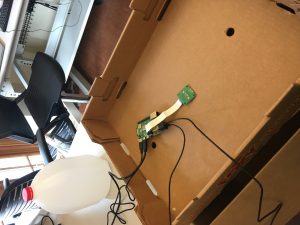This week, I mostly worked on doing integration, specifically handling a fair number of edge cases with regards to unregistered items. This consisted mostly of work in the Django code, and a few minor updates to the CV code. Both Harry and Jay helped me quite a bit as I didn’t have much experience with Django prior.
The CV code previously just gave it’s best guess out of the approved iconic image classes, or none if it wasn’t sure. The CV code was changed to accept a set of items in the current inventory. This is used in the event that an item was removed, so we don’t have to check every possibility, which should help with accuracy. It also deals with the edge case where the cv code says that an item was removed, that it didn’t say was in the cabinet in the first place. The CV code was also modified to accept arbitrary sets of additional Iconic images, to support user item registration. Both of these changes were relatively minor, and mostly just involved filtering/adding to the set of iconic image checked against.
The majority of the code work was done in Django, dealing with user registered items. Essentially, we needed to be able to be able to add unidentified items to the cabinets, and later change their category when the user identified them. We also needed to be able to handle them, in the case that the user decided to place the items and removed them, all without manually identifying them. Long story short this was resolved by creating a Iconic Image model item, with an optional associated item field, that was assigned a UNKNOWN category be default. Essentially, we then treat it as an a regular iconic image, until the user manually identifies it, at which point, we can propagate the identified category to the associated item object. We can also easily generate the prompts the user by filtering iconic models by category/created user. This handles most of the edge cases, and doesn’t have a huge drawback unless the user has huge amounts of unregistered items in their cabinets concurrently, which is unlikely. We still need to do some UI/CSS work here (the alert/request to identify items needs to be placed in a few different places and made much more apparent), but we have the needed functionality. There was also some minor technical debt that I had to fix regards to categories (IE we were making every item have a unique category. instead of re-using them).
Overall, for not knowing Django very well before this week, I’d say I did a pretty good job. Again, I obviously had a large amount of help from Harry and Jay, but I think I learned fairly quickly and got a good amount done. For the next week, I plan to almost exclusively work on the CV component, and try and get it within our needed criteria, and get the testing done so we have it for the slides.




